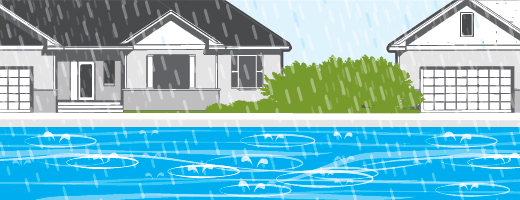Flood Ready first steps
Canadians can take action by making informed decisions on where and how they live, based on flood risks. By doing so, we can lessen or limit the overall impacts and costs associated with overland flooding in Canada.
1. Know the risks
The first step in being prepared for a flood is knowing the risks specific to your community and your region. You can learn about some past major flood events in Canada on the Environment and Climate Change Canada website.
Also, the majority of provinces and territories have information online on the flood situation in their area, as well as practical information for dealing with floods.
- Alberta
- British Columbia
- Manitoba
- New Brunswick
- Newfoundland and Labrador
- Nova Scotia
- Northwest Territories
- Nunavut
- Ontario
- Prince Edward Island
- Quebec
- Saskatchewan
- Yukon
2. Talk to your insurance agent or broker
Talk to your insurer to find out about what's covered under your policy.
3. Talk to your local government
Contact your municipal government to find out about their programs on reducing flooding impacts.
4. Protect your property
There are all types of things you can do to protect your property, from simple DIY fixes to more complex steps.
5. Get help from a professional
If you've experienced major flooding in the past, or have significant structural problems, like cracks in your foundation, you might need help from professionals, like engineers, plumbers or masons. A starting point is working with an independent assessor who can help you to figure out the most affordable solutions. Ideally, look for an assessor who isn't associated with any specific contractor, and who isn't looking to be retained to do the work themselves.
